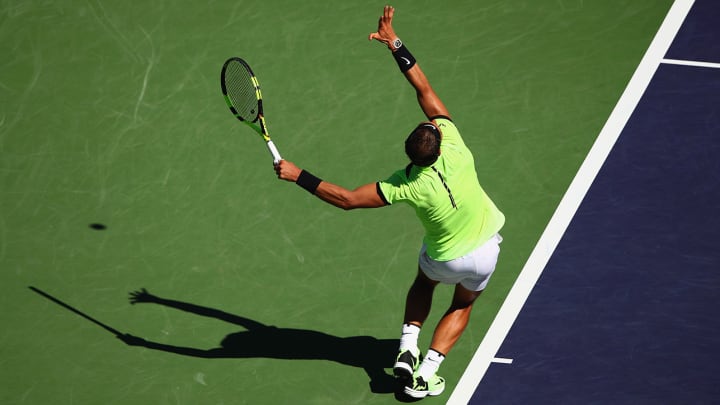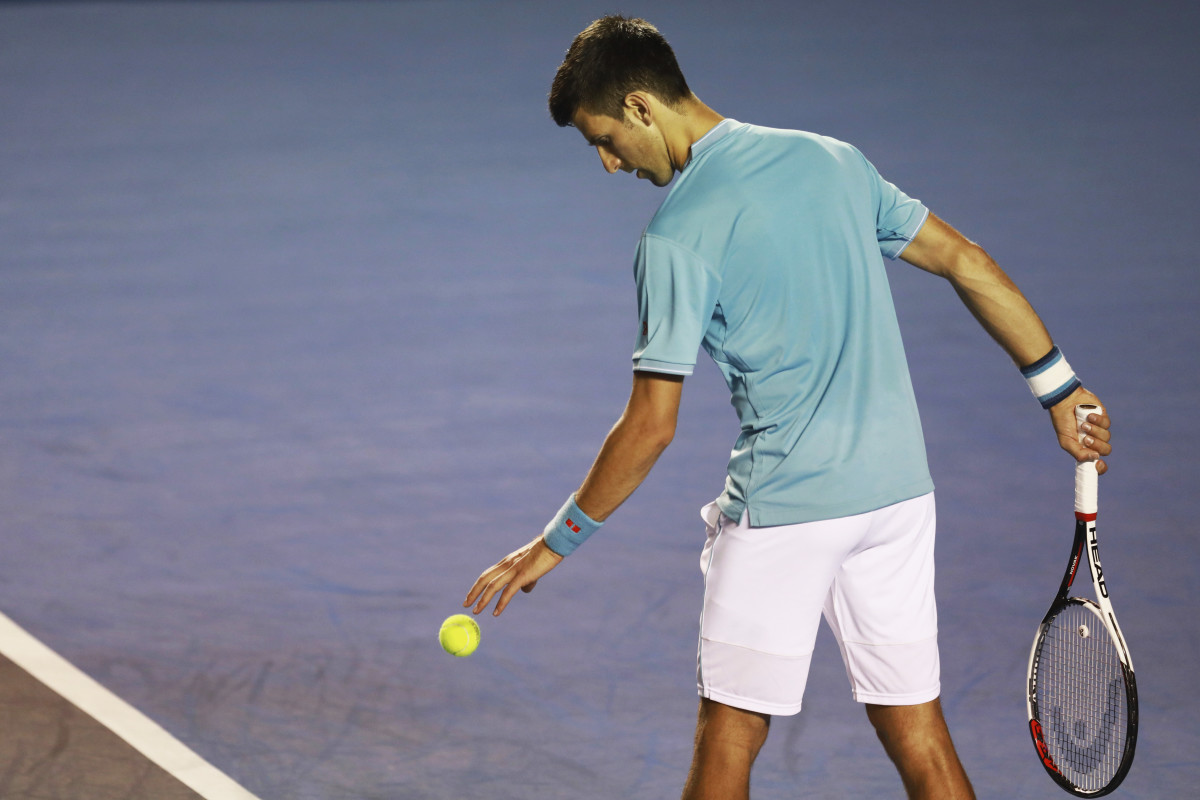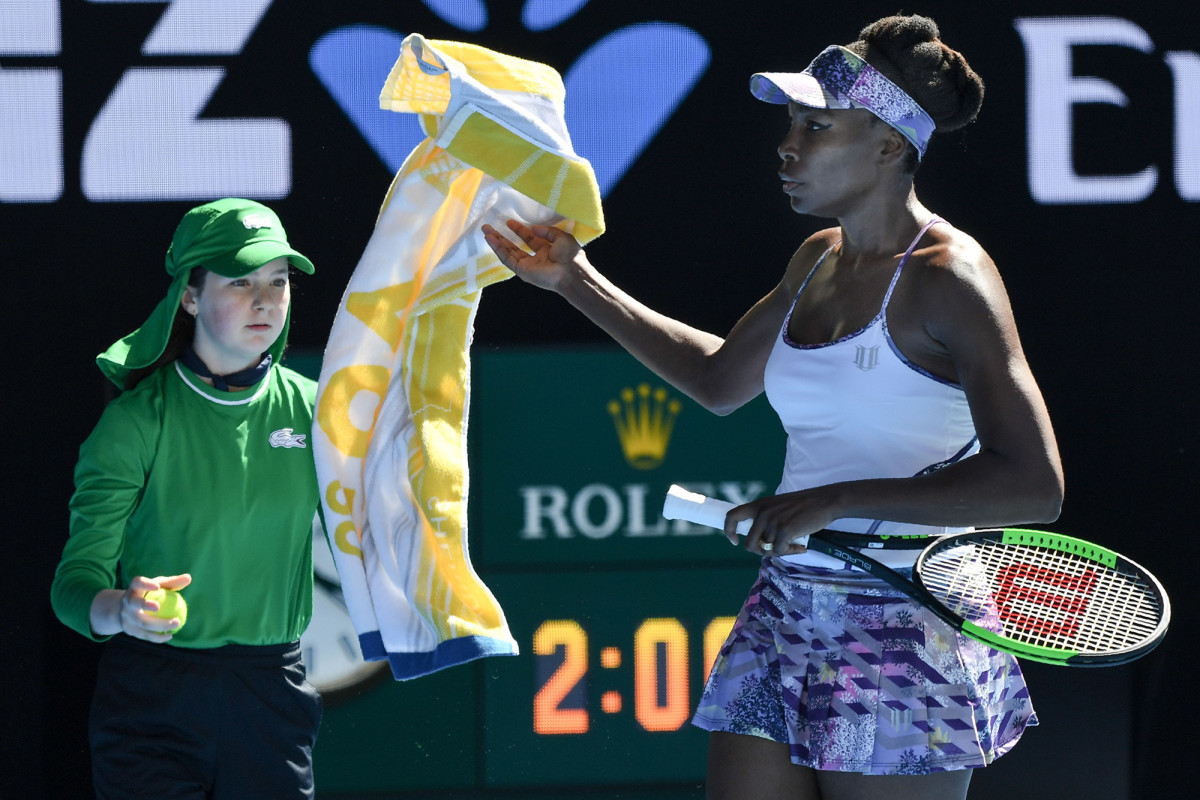A solution for shortening tennis matches: Disallow the bouncing ball

September of last year brought the news that the men’s and women’s professional tennis tours are considering changes to speed up the game, such as no-ad scoring, tiebreakers instead of third sets and possibly even shorter sets, to four games instead of six.
“It will help us with broadcast,” said WTA CEO Steve Simon. “It will help us keep people in the seats.... The attention span of the audience today is shrinking.”
It brings to mind similar changes enacted in football in the early 2000s. As in tennis, the NFL was reacting to the growing length of contests but not by addressing the issues that led to the problem. The NFL had been allowing TV commercials to run not only after scores but then again after the ensuing kickoffs, after quick three-and-out drives and sometimes even for “official timeouts” in the middle of drives. This unchecked corporate greed bloated the average game time to well over the standard three-hour telecast. But instead of cutting down on commercial timeouts, the league voted in new rule changes. Now, except near the end of each half, the clock keeps running after kickoffs, out-of-bounds plays and declined penalties. The end result: fewer football plays per game.
Mailbag: Should Maria Sharapova be given a French Open wildcard?
The proposed changes in tennis would also result in less action, instead of addressing the reason tennis matches now take so long: inaction. Television commercials did lengthen matches considerably early in the Open era—in the old days, players didn’t even sit down when changing ends of the court; they just had a quick sip, toweled off and kept on moving. That’s why the great Don Budge-Gottfried von Cramm match of 1937, which went to 8-6 in the fifth set, only took two and a half hours. However, no one was complaining about match length in the Borg-McEnroe era, and they sat down for TV commercials every two games. The difference now is in the compulsive routines that stretch the time between every point into a mind-numbing lull almost capacious enough for its own quick TV ad. (I hope no marketing execs are reading this.)
When Borg finished a point, he turned to get a new ball from the ball kid, maybe bounced it once or twice, and served up the next point. But now, as though OCD were as contagious as an STD, professional tennis players spend a considerable fraction of their match time (and our viewing time) waiting for a towel to touch for good luck, studiously inspecting five or six balls (more on that later) and then standing at the baseline bouncing a ball repeatedly. Novak Djokovic was the worst offender, early in his career, with upwards of 15 bounces before every serve, but even in a match last year against Rafael Nadal they were each bouncing 11-15 times before each serve. In 2012, Djokovic was seen committing 29 bounces before a big point.
It’s not necessary. I’m no pro, but I have played competitive tennis most of my life and I never, ever bounce a ball. It is important to stop for a moment at the baseline, get your feet set and your balance just right before you begin your motion. But I would bet my 1938 Don Budge racket that if professional players were not allowed to bounce the ball, not even once, their serves would be just as good as they are now. And I’d be able to watch Nadal vs. Djokovic live, without depending on the fast-forward button to get me from point to point.

The U.S. Open experimented last year in the boys’ and girls’ draws with using a visible 20-second “shot clock” between points. If umpires would even enforce the existing 25-second rule uniformly and absolutely, that would do the trick. But that causes anxiety over getting the bounces in before the unseen clock goes off. And who wants to see Nadal and Djokovic interrupted just as they’re finally about to toss, then reprimanded or penalized? Better to get rid of the bouncing altogether. My modest proposal: penalize ball bouncing like they used to penalize racket smashing. One bounce, a warning. Next bounce, point penalty. Then game, then set, then match. Players would simply stop bouncing, so actual penalties would soon become rare.
Players could also drop, without cost, their compulsion to act as ball-factory assembly-line foremen before every point. I understand that a ball that has just been played will be slightly fuzzier than the others, and you want to serve with the least fuzzy ball available. (It will zip through the air with the least wind resistance.) Even I look at the two balls in my hand and choose the smoother to serve with. But then I don’t open two new cans every nine games. And even after a player has gone through the ball kid’s supply of virtually brand new balls and chosen the most pristine orb—the one that will proffer that extra half an mph of service speed—the act of bouncing it off the court 15 times, half of that with the racket, actually turns it into the fuzziest one. This is like obsessively washing your hands every 10 minutes and then drying them on an old, soiled towel. Let’s get rid of these pointless inspections—you get one ball from the ball kid, two if you keep one in your pocket.

Then there’s the toweling off. The use of ball kids as Roman bath slaves, forced to fetch the player’s sweaty towel and obsequiously hand it over just so, has kept the toweling from taking up much time. And I have no problem with it when it’s really needed. But it’s become just another compulsive routine—players motion for the towel before beginning the ceremonious “inspection of the balls” but often barely touch it before throwing it back. And really, how often did Ashe and Laver and Borg towel off, even in the heat and humidity of Forest Hills in September, playing with leather grips? Every game, maybe, but not every point.
Even worse than its distending effect on professional matches, the players’ time-killing habits have begun to taint the recreational game. Like kids emulating the strokes of their favorite players, some of the middle-aged men I play with have picked up the dilatory tics of the pros. So now I have to wait for Bob to towel off, throw it back at the fence, collect all three balls and then knock one away, get his feet just right at the baseline, bounce the ball nine times, get his arms in just the right position and finally toss the ball, hit it in the net, and begin the entire maddening process over again.
Serena Williams withdraws from Indian Wells and Miami Open citing knee injury
I’m not opposed to all change. The Hawk-Eye system of challenging line calls is a great boon and adds very little time. Playing serves off the net cord, like in the middle of a point, might be fun, would save some arguments and a little bit of time, and wouldn't result in less tennis. But let’s keep third sets and ads and full-length sets. Instead of cutting down on the number of points per match, let’s cut down on the wasted time between them. The pros—once they get used to the prohibition—will probably be grateful to be freed from their own obsessive habits. And maybe the millennial audience, which executives seem to think will watch more tennis if there’s less tennis, would actually prefer to watch balls being hit rather than bounced.
Marshall Jon Fisher is the author of A Terrible Splendor, A Backhanded Gift, and other works.
